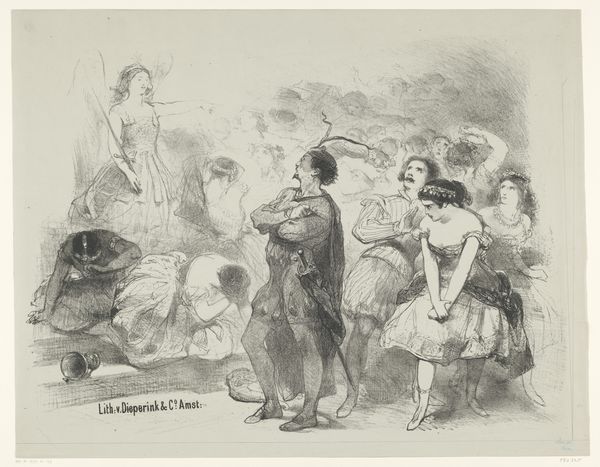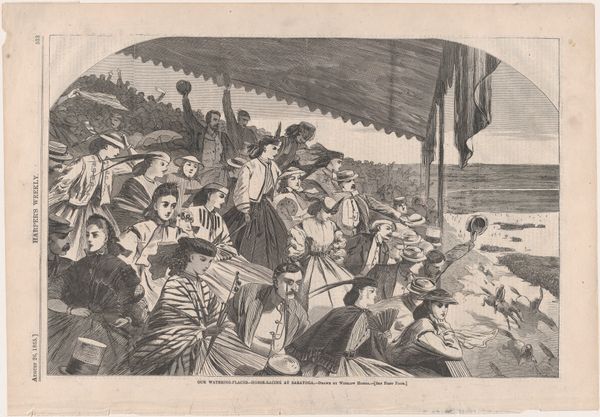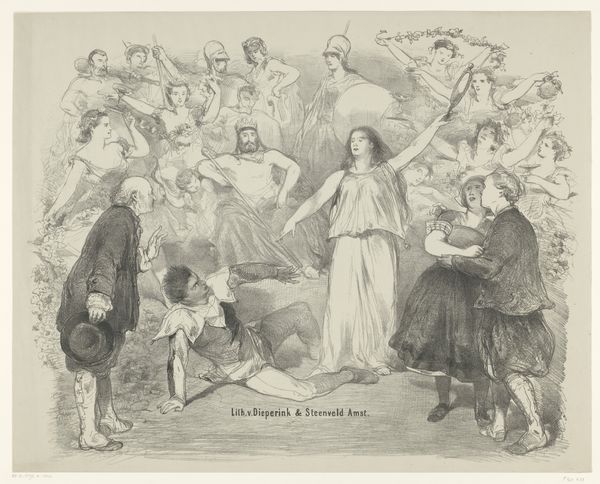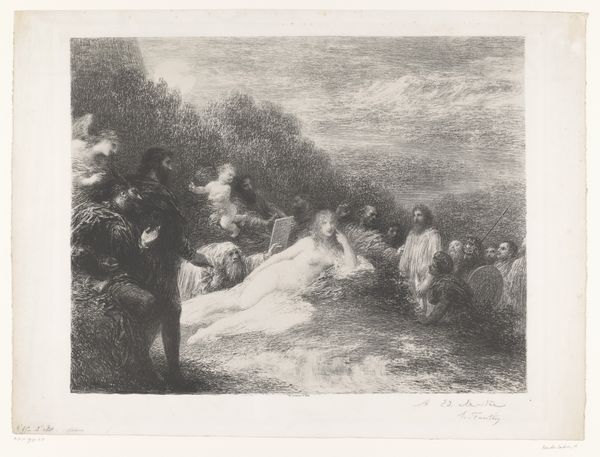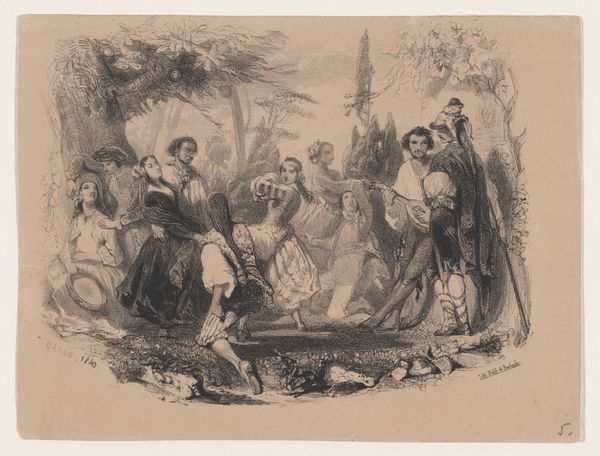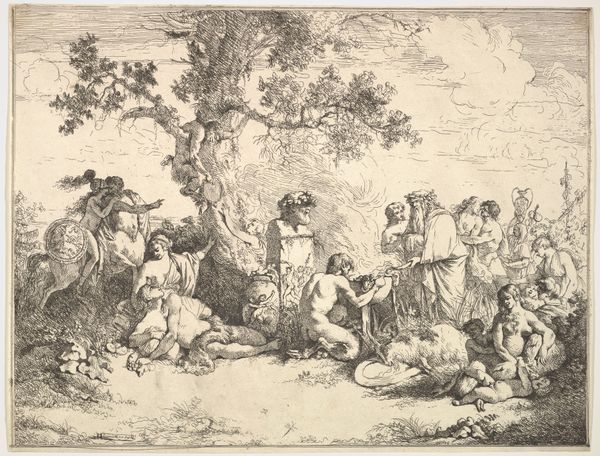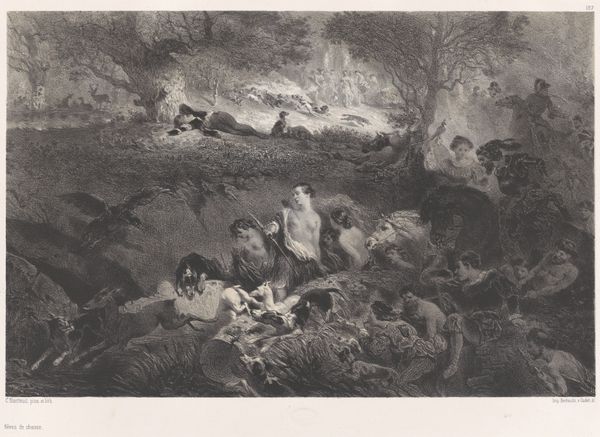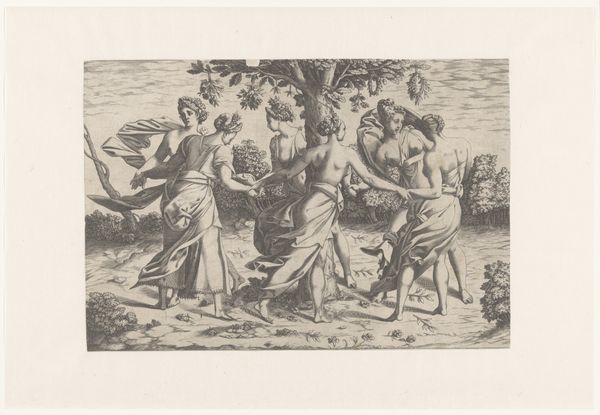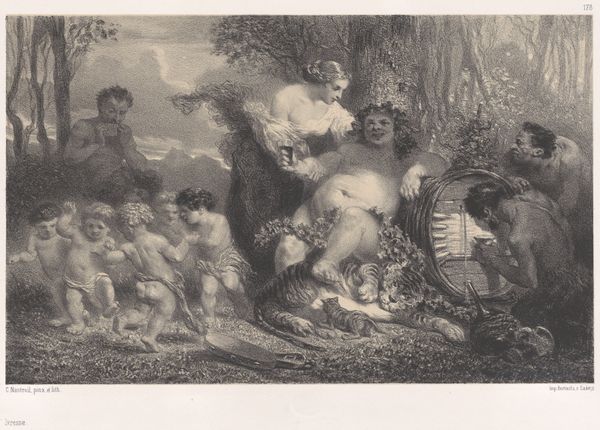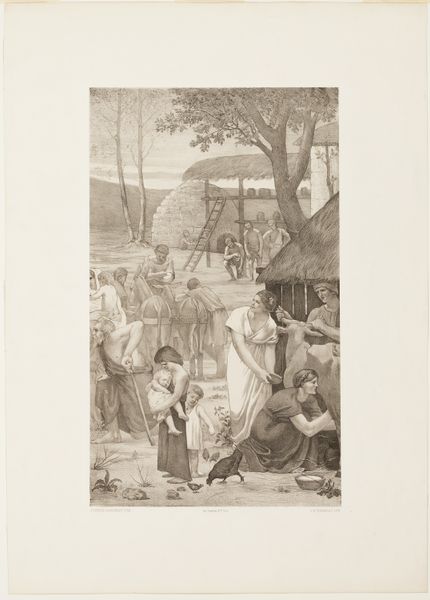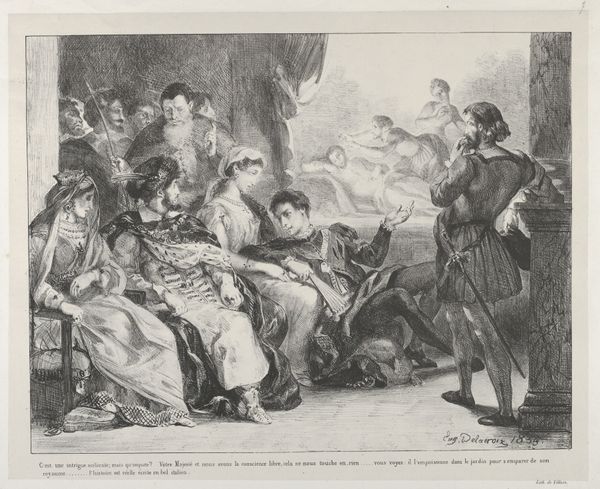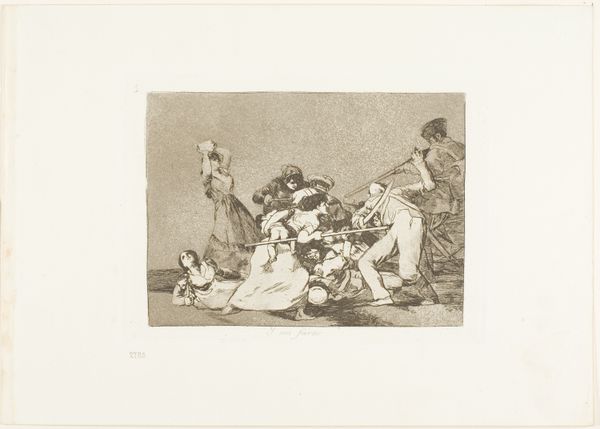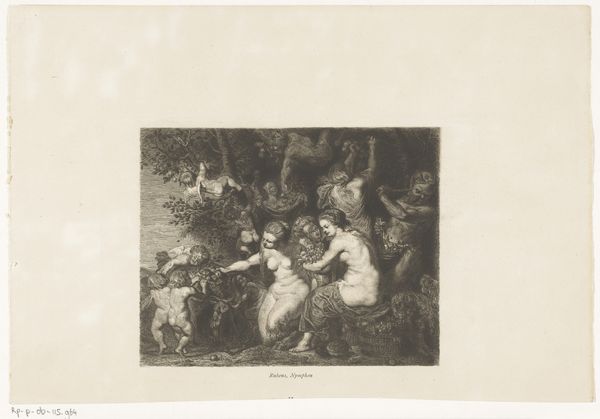
drawing, pencil, charcoal
#
drawing
#
narrative-art
#
charcoal drawing
#
pencil drawing
#
pencil
#
genre-painting
#
charcoal
Dimensions: height 519 mm, width 698 mm
Copyright: Rijks Museum: Open Domain
Editor: So, here we have Charles Rochussen's "Scène uit toneelstuk De gelaarsde kat," created between 1865 and 1868, using pencil and charcoal. It strikes me as incredibly theatrical, like a dream unfolding on paper. What do you see in this piece from a formalist point of view? Curator: The first element that strikes me is the dichotomy in the visual structure. Rochussen employs stark contrasts in texture. Notice how the softness of the floral arrangements around the female figures, rendered with delicate pencil strokes, differs sharply from the heavier, almost agitated charcoal used for the Puss in Boots character and the surrounding children. Editor: Yes, I see what you mean. It is very effective and contrasting, but is it chaotic as a whole? Curator: The apparent chaos, however, resolves upon closer inspection. Observe the compositional arrangement: The figures, although densely packed, are strategically placed to guide the eye through the narrative, forming a series of overlapping planes. The spatial relations of figures give emphasis to each character from the fairy tale in this play scene. How does this spatial analysis modify your perception? Editor: That's interesting; the layering does create a sort of visual depth. And by isolating and separating characters, it does tell the scene's story, instead of blending as one blurry picture. Curator: Precisely! Also, note the tonality—the artist masterfully utilizes a limited tonal range to evoke a specific mood, emphasizing light and shadow. The restricted palette enhances the expressive qualities of line and form. Editor: I can definitely see how Rochussen uses form and composition, not just content, to drive the piece. I had been stuck on just interpreting it based on the play's plot and figures depicted. Thanks for sharing your insights. Curator: You're most welcome. These elements work in tandem to construct meaning beyond the immediately representational, compelling us to consider the intrinsic language of art itself.
Comments
No comments
Be the first to comment and join the conversation on the ultimate creative platform.
